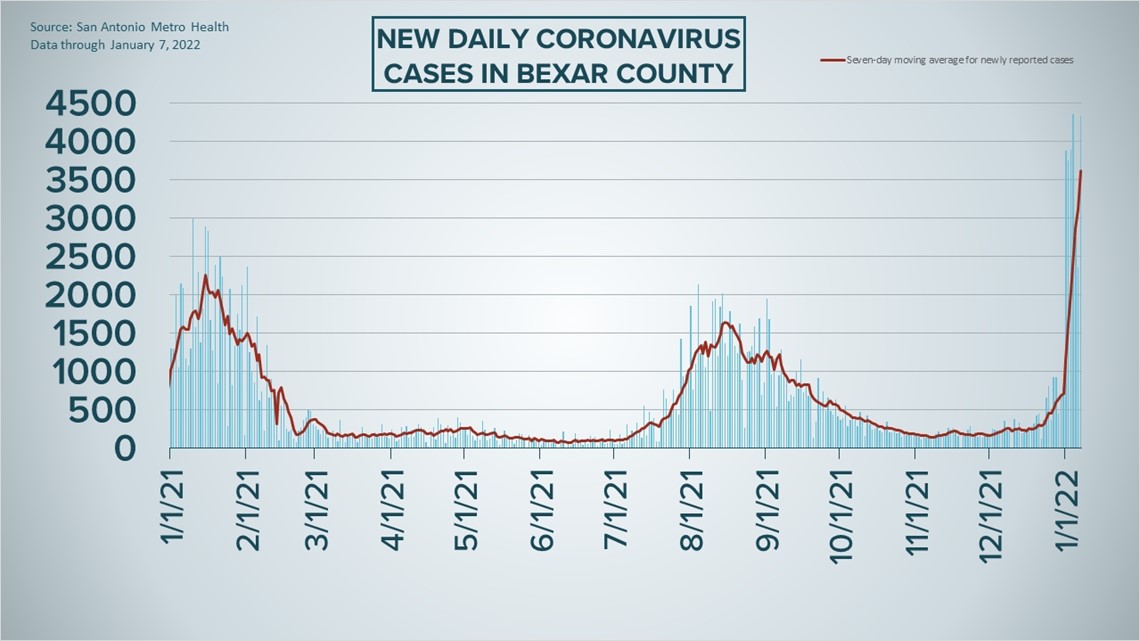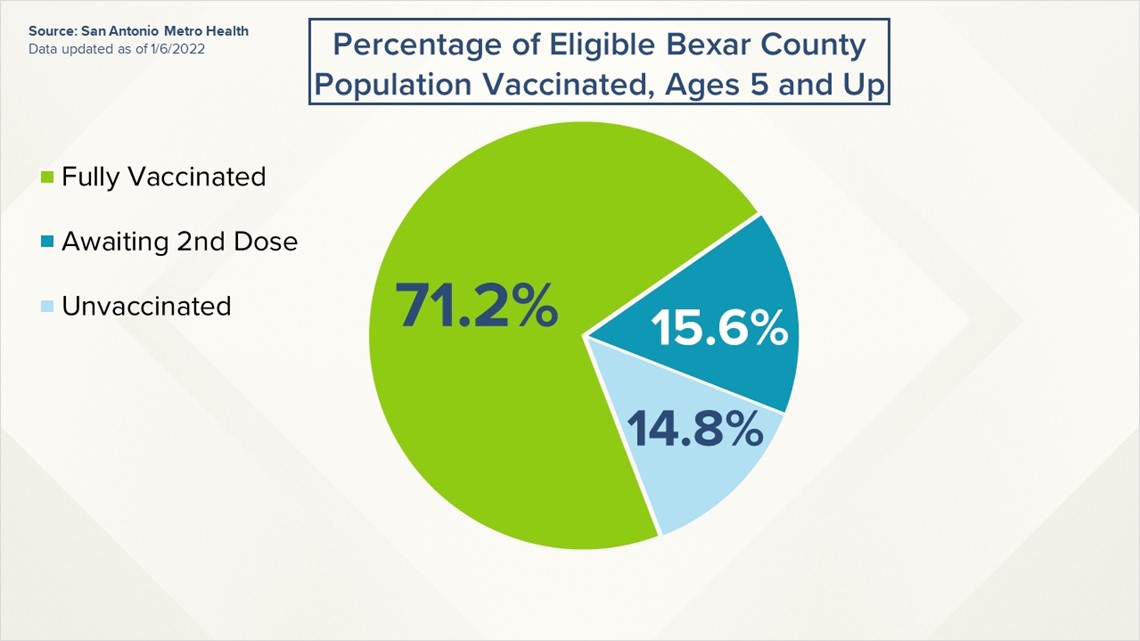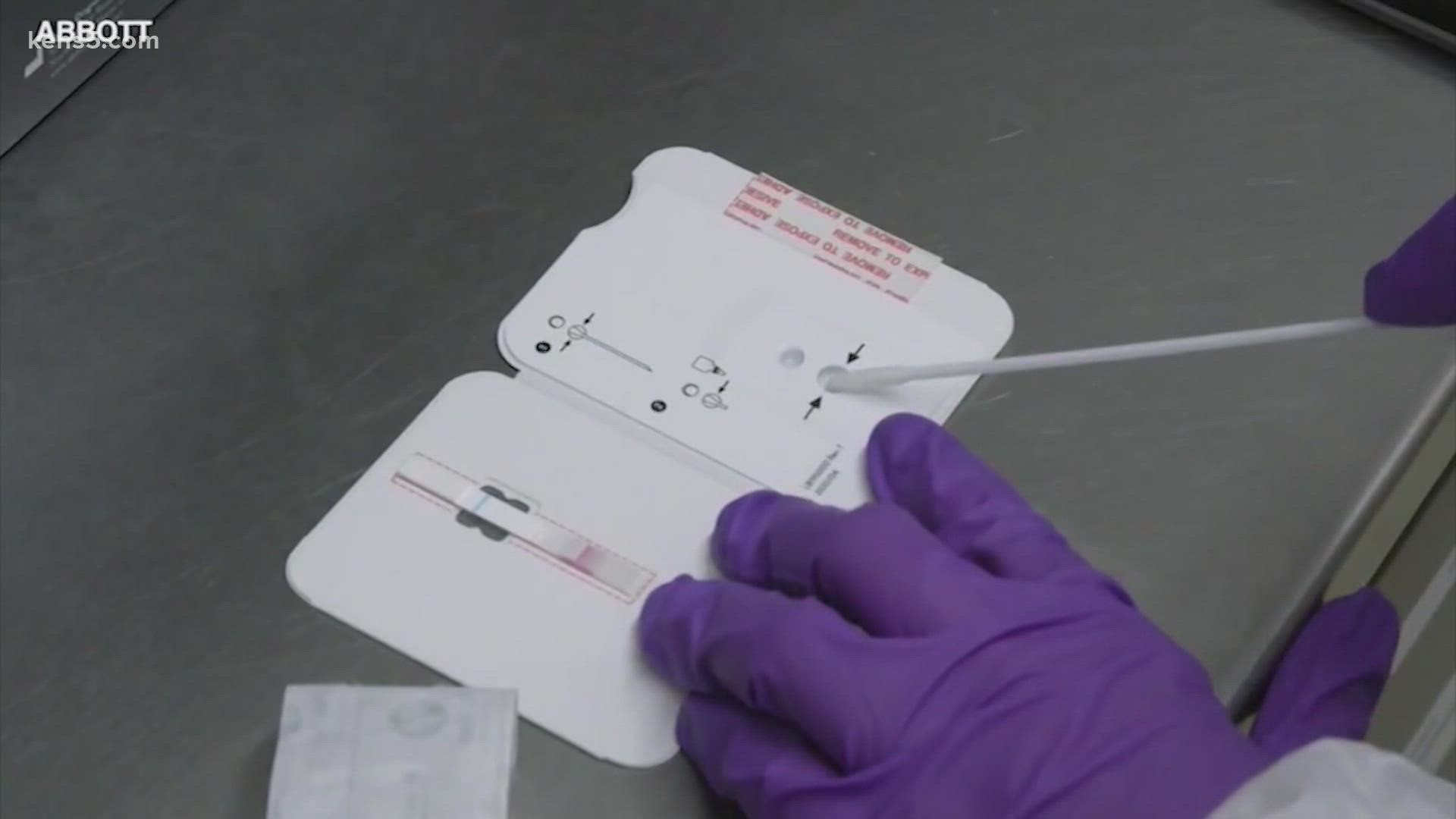SAN ANTONIO — The first week of 2022 ended with the second-highest new-case count of the ongoing pandemic for Bexar County, with 4,331 new coronavirus diagnoses reported by Metro Health on Friday.
It continues a drastic surge observed in San Antonio and across the country, exacerbated by the contagious but slightly less severe omicron variant as the pandemic continues. A total of 25,337 cases were tallied in the first week of the new year, more than five times as many as Metro Health reported in the last week of 2021 (4,965).
It took until July 16, 2020 to record as many new COVID-19 cases in Bexar County as our area has seen in the past seven days.
Hospitalizations also rose once again, with 679 Bexar County residents being treated for COVID-19 on Friday; that's up 54 from Thursday, and the highest amount of local hospitalizations since Sept. 29.
Meanwhile, one more resident has died from virus complications, raising the local death toll to 4,991.
San Antonio took extra measures to confront omicron this week by announcing three new mass no-cost testing sites to accommodate residents on a walk-up basis, but the ripple effects of the latest wave have already reached the Spurs and local universities' spring semester schedules. Local leaders have also inquired about federal help in distributing remdesivir to treat high-risk patients.
On Thursday night, the organizers of San Antonio's official Martin Luther King, Jr. March, the largest event of its kind in the country, voted to cancel an in-person event for the second straight year.
The city is also warning residents about fake testing sites hoping to nab personal information.
How Bexar County is trending




Vaccine Progress in Bexar County
The following numbers are provided by San Antonio Metro Health. A full breakdown can be found here.
- 1.644 million eligible Bexar County residents have received at least one dose of the coronavirus vaccine as of Thursday, Jan. 6, representing 86.8% of the county's population eligible (those over the age of 4) to receive a vaccination.
- 1.348 million eligible Bexar County residents are fully vaccinated as of Thursday, Jan. 6, representing 71.2% of the county's population eligible to receive a vaccination.


The CDC states that "when a high percentage of the community is immune to a disease (through vaccination and/or prior illness)," that community will have reached herd immunity, "making the spread of this disease from person to person unlikely."
The City of San Antonio breaks down the vaccination rates by zip code on Metro Health's Vaccination Statistics page.
Coronavirus in Texas
The total number of coronavirus cases in the state since the pandemic began grew by 54,263 on Friday, according to the Texas Department of State Health Services. That total includes 44,857 new confirmed cases and 9,406 new probable cases. More details can be found on this page.
Friday's figures bring the total number of Texans diagnosed with COVID-19 to more than 4.946 million.
An additional 114 Texans have died from virus complications, meanwhile, raising the statewide death toll to 75,128.
Latest Coronavirus Headlines
- Spurs have several players in health & safety protocols and Dejounte Murray's possible All-Star nod | Locked On Spurs
- COVID-19 halts in-person San Antonio MLK March once again
- What's the best way to tell if it's a cold, the flu or COVID?
- Fake coronavirus testing sites popping up across San Antonio | Here's how to tell if it's legitimate
- City of San Antonio and Community Labs opening three new COVID testing sites
- Here are the San Antonio universities delaying spring classes due to coronavirus concerns
- CDC: All US cruise ships with passengers have reported COVID-19 cases
- Grammys postpone Jan. 31 show, citing omicron variant risks
Coronavirus symptoms
The symptoms of coronavirus can be similar to the flu or a bad cold. Symptoms include fever or chills, cough, shortness of breath or difficulty breathing, fatigue, muscle or body aches, headache, new loss of taste or smell sore throat, congestion or runny nose, nausea or vomiting, and diarrhea, according to the Centers for Disease Control.
Most healthy people will have mild symptoms. A study of more than 72,000 patients by the Centers for Disease Control in China showed 80 percent of the cases there were mild.
But infections can cause pneumonia, severe acute respiratory syndrome, kidney failure, and even death, according to the World Health Organization. Older people with underlying health conditions are most at risk.
Experts determined there was consistent evidence these conditions increase a person's risk, regardless of age:
- Chronic kidney disease
- COPD (chronic obstructive pulmonary disease)
- Obesity (BMI of 30 or higher)
- Immunocompromised state (weakened immune system) from solid organ transplant
- Serious heart conditions, such as heart failure, coronary artery disease, or cardiomyopathies
- Sickle cell disease
- Type 2 diabetes
- The CDC believes symptoms may appear anywhere from two to 14 days after being exposed.
Human coronaviruses are usually spread...
- Between people who are in close contact with one another (within about 6 feet).
- Through respiratory droplets produced when an infected person coughs, sneezes or talks. These droplets can land in the mouths or noses of people who are nearby or possibly be inhaled into the lungs.
- Some recent studies have suggested that COVID-19 may be spread by people who are not showing symptoms.
Help stop the spread of coronavirus
- Stay home when you are sick.
- Eat and sleep separately from your family members
- Use different utensils and dishes
- Cover your cough or sneeze with your arm, not your hand.
- If you use a tissue, throw it in the trash.
Find a Testing Location
City officials recommend getting a COVID-19 test if you experience fever or chills, cough, shortness of breath or difficulty breathing, fatigue, muscle or body aches, headache, new loss of taste or smell, sore throat, congestion or runny nose, nausea or vomiting, or diarrhea.
Here's a Testing Sites Locator to help you find the testing location closest to you in San Antonio.

